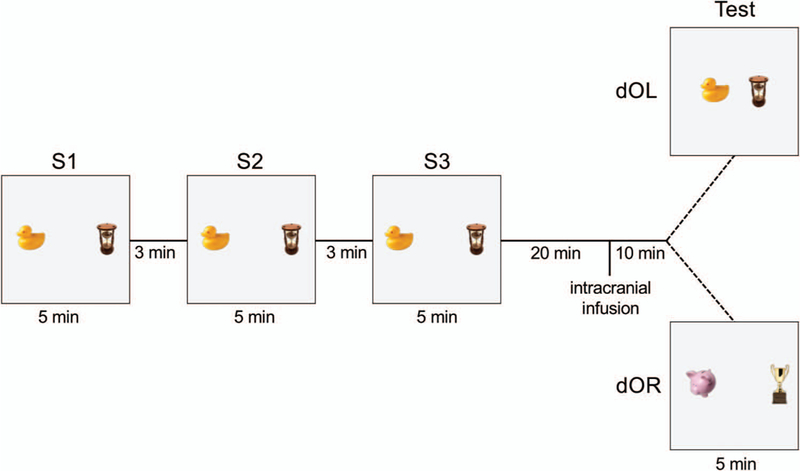Figure 1.

Graphic representation of double object location (dOL) and double object replacement (dOR) recognition tasks. Two 3-dimensional objects are positioned 40 cm apart in a square Plexiglas arena. During each 5-min study session (S1, S2, S3), rats are placed into the arena and allowed to explore freely the field and the two objects anchored to the floor of the arena. Between each study session, rats are removed from the arena and placed in their holding cage for a 3-min interval. Twenty minutes after S3, rats received an infusion of lidocaine or 4-CIN into either the hippocampus or striatum. Ten minutes later, a 5-min test session for dOL or dOR recognition was conducted. For dOL, the two objects were repositioned horizontally to 10 cm apart. For dOR the old objects were replaced in the original locations by two new objects that were similar in size, but different in form, color, and material. See the online article for the color version of this figure.
